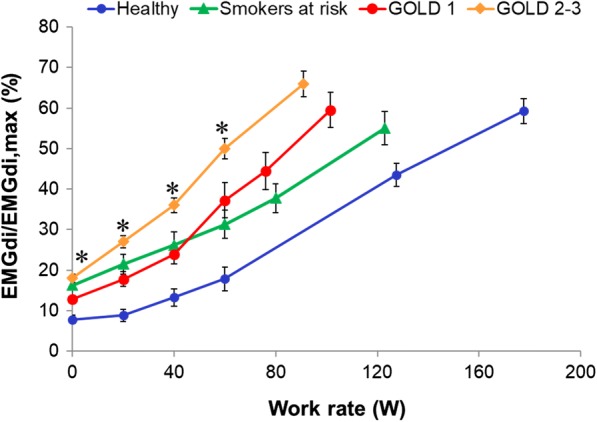Fig. 2.

Inspiratory neural drive during exercise represented by diaphragmatic activation as a percentage of maximal diaphragmatic activation (EMGdi/EMGdi,max) across healthy controls, smokers, and spectrum of COPD. Values are mean ± SEM. *p < 0.05 significantly different from healthy controls at a given work rate. COPD chronic obstructive pulmonary disease, EMGdi/EMGdi,max index of inspiratory neural drive to the crural diaphragm, GOLD Global Initiative for Chronic Obstructive Lung Disease, SEM standard error of the mean.
Adapted from Guenette JA, et al. Mechanisms of exercise intolerance in Global Initiative for Chronic Obstructive Lung Disease grade 1 COPD. Eur Respir J. 2014;44(5):1177–1187. Adapted from Elbehairy AF, et al. Mechanisms of exertional dyspnoea in symptomatic smokers without COPD. Eur Respir J. 2016;48(3):694–705. Reprinted with permission of the American Thoracic Society. Copyright © 2019 American Thoracic Society. Faisal A, Alghamdi BJ, Ciavaglia CE, Elbehairy AF, Webb KA, Ora J, Neder JA, O’Donnell DE. 2016. Common mechanisms of dyspnea in chronic interstitial and obstructive lung disorders. Am J Respir Crit Care Med. 193(3):299–309. The American Journal of Respiratory and Critical Care Medicine is an official journal of the American Thoracic Society
